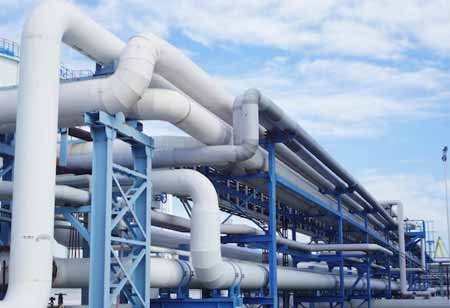Thank you for Subscribing to Energy Business Review Weekly Brief
The Role of Technology in Ensuring Pipeline Integrity
Pipelines are the backbone of the global economy, transporting valuable resources such as oil, natural gas, and water over long distances.

By
Energy Business Review | Tuesday, April 22, 2025
Stay ahead of the industry with exclusive feature stories on the top companies, expert insights and the latest news delivered straight to your inbox. Subscribe today.
Integrity, public safety, and infrastructure efficiency encompass five pipeline agencies: regular inspection, risk analysis, maintenance, emergency response, and proper documentation.
Fremont, CA: Pipelines are the backbone of the global economy, transporting valuable resources such as oil, natural gas, and water over long distances. Failure of these infrastructures poses significant environmental, economic, and human safety risks. Ensuring the safety and reliability of pipelines throughout their life cycle is an integrated process that ensures their longevity and reliability.
The pipeline integrity process encompasses activities intended to avoid, detect, and correct incidents that might affect the pipeline's performance. Its importance can be paralleled for multiple reasons: for instance, it helps prevent sudden failures that lead to environmental damage and time-consuming repair work with human casualties. Proactively managing pipeline integrity can support the operator in mitigating risks and maintaining the base of these critical assets operating safely.
Ongoing inspection and monitoring have an integral role in any pipeline integrity process. Such advanced technologies involve internal inspection tools, pigging devices, and external inspection methods by aerial surveys and ground-based techniques. These can pinpoint problems of corrosion, cracks, or mechanical damage that are likely to develop into significant issues. Regular monitoring involves real-time data collection and analysis to detect anomalies indicating developing problems.
Other essential variables involved in managing pipeline integrity include risk assessments and management. This would imply the analysis of certain identifiable risks that may be impending on the pipeline system, including those emanating from environmental elements, operational stress, and human activities likely to be experienced. With these risks identified and priorities assigned, operators can apply the appropriate mitigation measures that will be proper through reinforced construction, advanced materials, or additional monitoring systems. Risk assessment helps ascertain that resources are used efficiently to combat the most critical vulnerabilities.
Maintenance and repair complete the pipeline integrity process. Once possible problems are detected, maintenance should be timely and efficient. Such tasks may range from minor repairs to major overhauls and replacements. An adequately scheduled maintenance plan would avoid unexpected failures and extend the pipeline's service life.
Emergency response planning forms part of pipeline integrity management, wherein the operator is prepared through personnel training, liaising with local authorities, and resources for the management and containment of such incidents to minimize failure consequences in case of sudden accidents.
Other segments that would complete the process are the documentation and reporting of the integrity process. Regulatory requirements and trend analysis relating to inspections, maintenance activities, and incident reports would require detailed records. Records also characterize the pipeline's condition to update integrity management strategies in the future.






